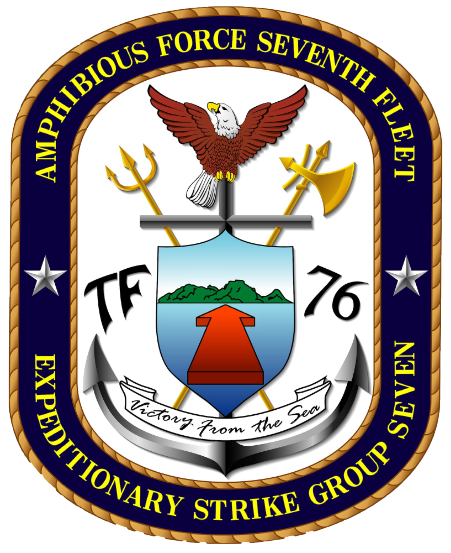Kevin Flinn, United States Navy, Mass Communication and Public Affairs
Writing commentary
A Ship Out of Water
Overview
-
This reflective prose commentary was written during a shipyard period aboard USS Blue Ridge, drawing parallels between an ancient philosophical paradox and a living vessel of modern naval operations.
The assignment came without a clear prompt, simply, “write something.” Expecting edits or rejection, I submitted a piece grounded in a philosophical metaphor and history, knowing it fell outside the norm for official commentary. It was published with no revisions and went on to win 1st place in the U.S. Navy’s top content competition.
-
I leaned into a poetic, philosophical storytelling. The voice is meditative, layering metaphor (Theseus’ paradox) over my tangible setting (a dry dock), inviting the reader to consider identity, legacy, and continuity in both ship, crew, and humanity.
Resonance of service. Though abstract, the piece resonates with shared naval experience: the transformation of a ship, the memories embedded in its parts, and the invisible threads between people and a place or thing (or in this case, both). It looks at continuity in and honors the endurance of a shared, collective identity.
Clients
A Ship Out of Water
The Ship of Theseus is a philosophical thought experiment and logical paradox about identity and objects in the world. In ancient Greece, a ship was preserved for hundreds of years in honor of a famous king named Theseus, who had led in many naval battles. The paradox begins like this:
Would you call the ship the same ship if one wooden plank is replaced? Moreover, if you replaced every single plank on the legendary wooden ship, is it the same ship? Is there a median of identity somewhere between? What is “it,” or moreover, the ship? What is “an object?” Is the ship one thing among many? Is it one thing comprised of many?
While there might not be any clear cut definition for the ship’s paradox, as someone can look at Blue Ridge in dry dock right now, with so many of the movable parts being moved and replaced, what can be seen is a body. Each part is a cell, the whole ship a body. What the Sailors embarked aboard Blue Ridge have shared is the ship and in turn, the ship shares their stories. The comparison of Theseus to Blue Ridge is to create another paradox, one of the ship’s identity and the crew that has always supported it. Each solution might seem to be right and wrong, both together and apart. This ship can be one thing among many and one thing comprised of many parts and many people over time.
Having the keel laid in 1967, and considering a recent estimate of the average age of a battle force ship only being 19-years old, few might have guessed that Blue Ridge would be sitting where it is, a 46-year old ship getting repairs, with plans of it lasting for at least another 24 years. The ship sits on blocks, its sides exposed to the open air.
More stories waft in the air between the ship and the dry dock. Dry Dock 6, at Naval Ship Repair Facility Yokosuka, has some of its concrete sides visibly riddled with bullets from an aircraft circa World War II. Today, cats from a nearby hill come down during the winter months with their kittens to stay warm under the concrete blocks.
Like the Ship of Theseus, Blue Ridge has been active in the turbid, oceanic waters. Unlike it though, Blue Ridge has yet to consist of a plethora of questions. It has been a carrier of action, a purveyor of stories. And in its current mission, mending the ship, restoring the condition will stretch the ship’s life, letting Blue Ridge navigate new narratives, staking claim of an identity earned.
Outcomes
Approved without a single edit, it was later awarded 1st Place in Writing (Commentary) at the Russell Egnor Navy Media Awards. The piece won among submissions from all active-duty servicemembers Navy wide.











